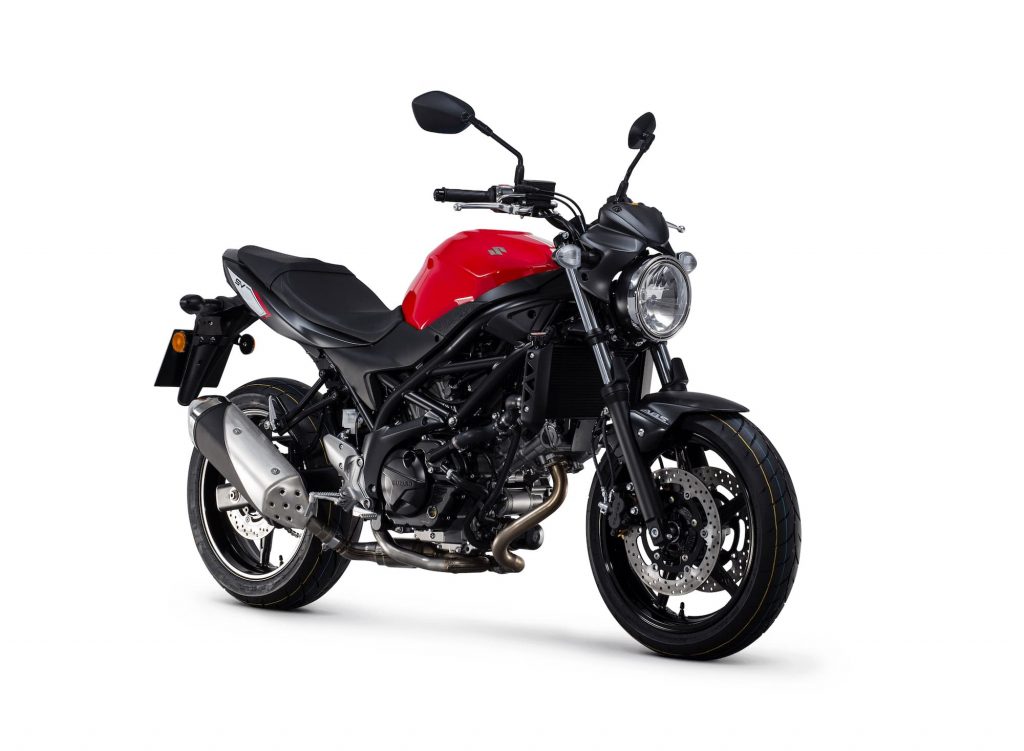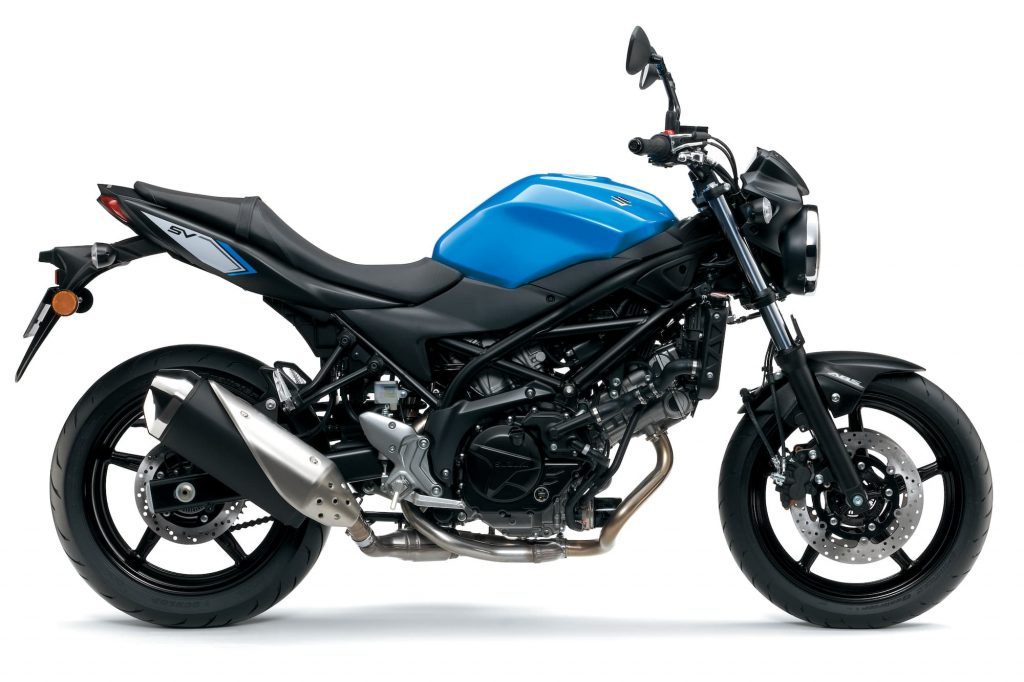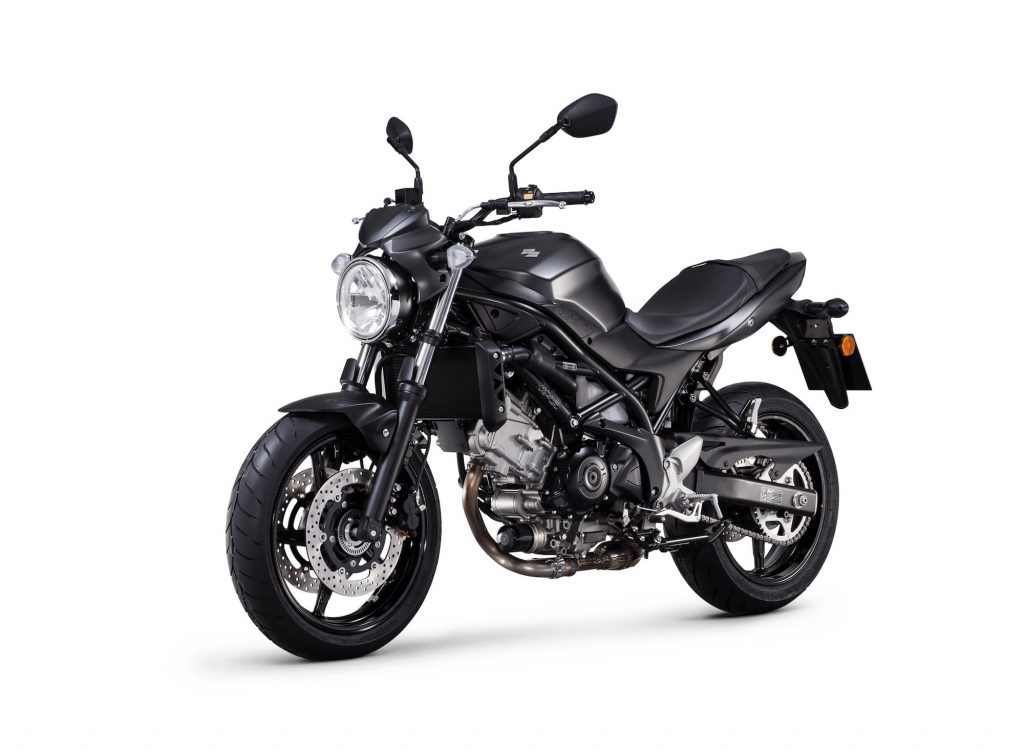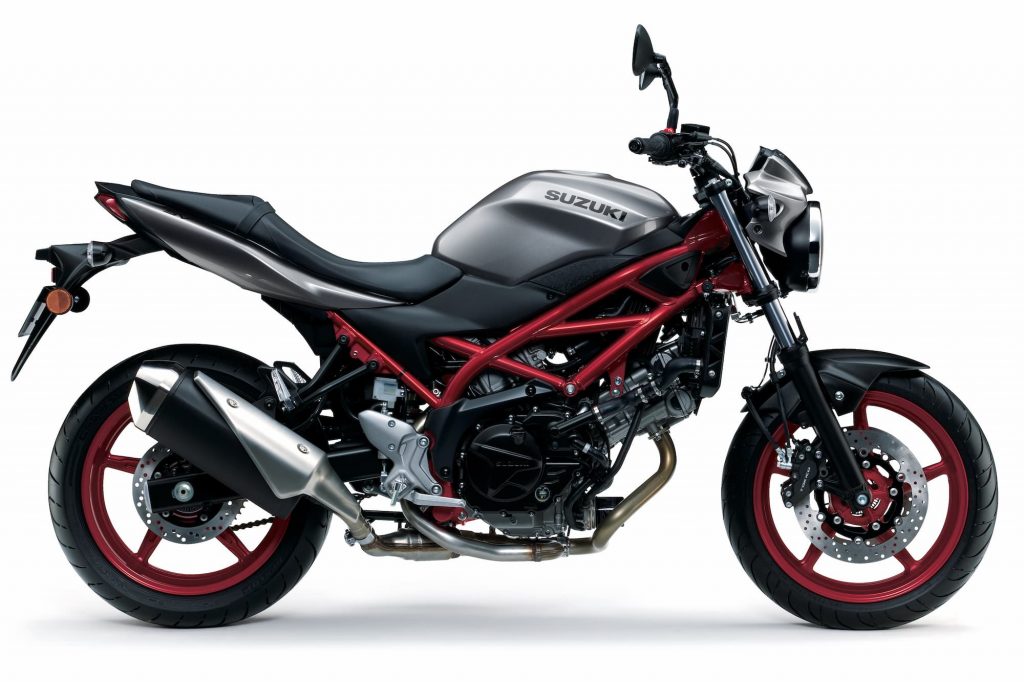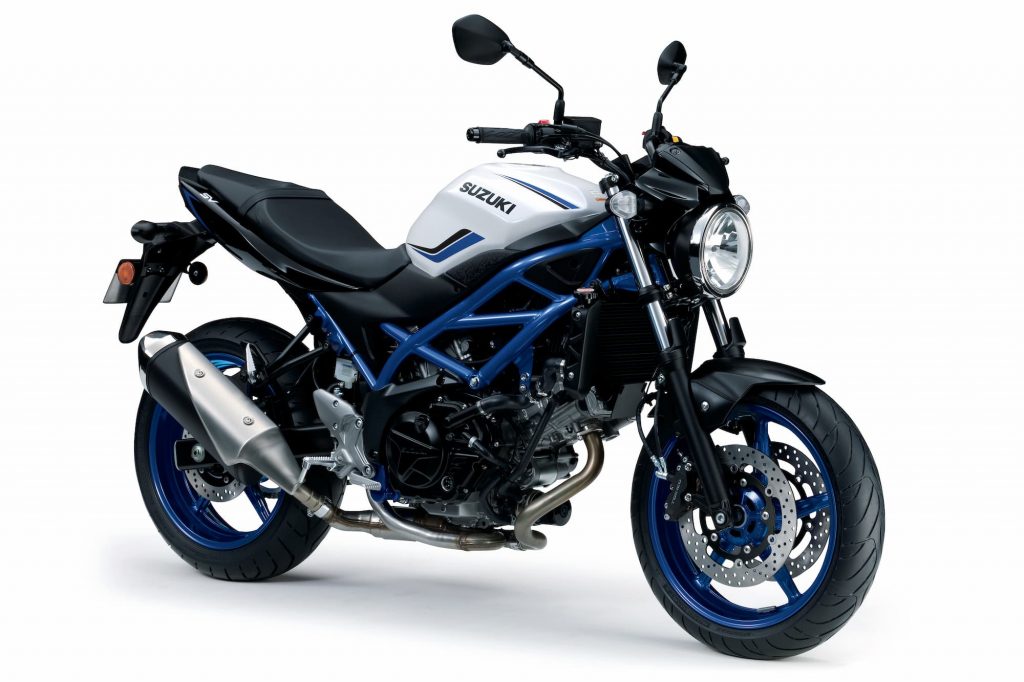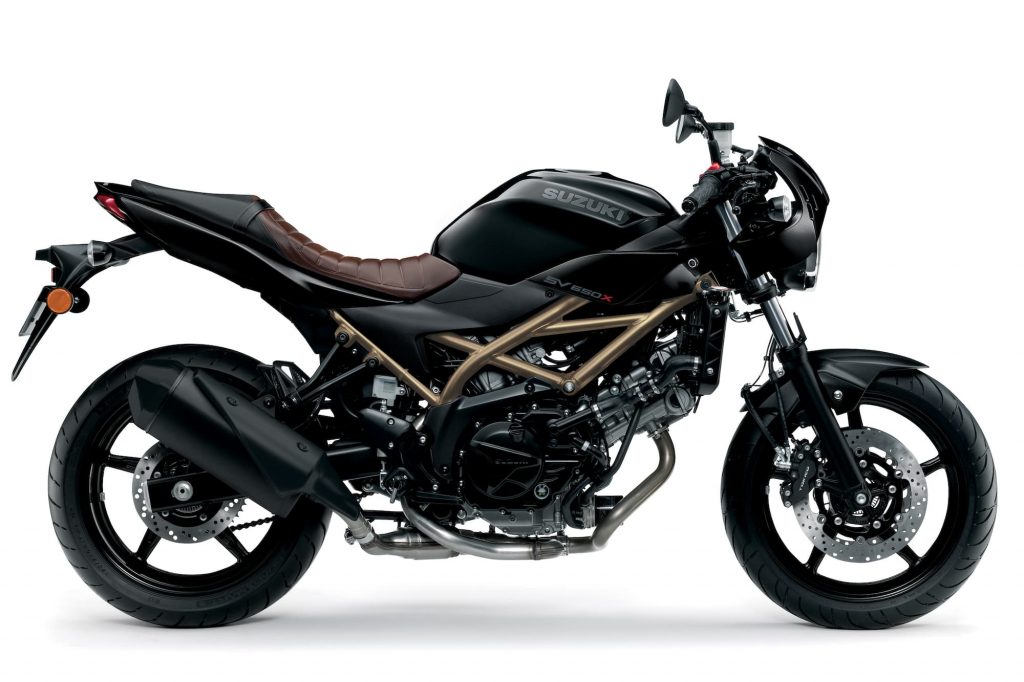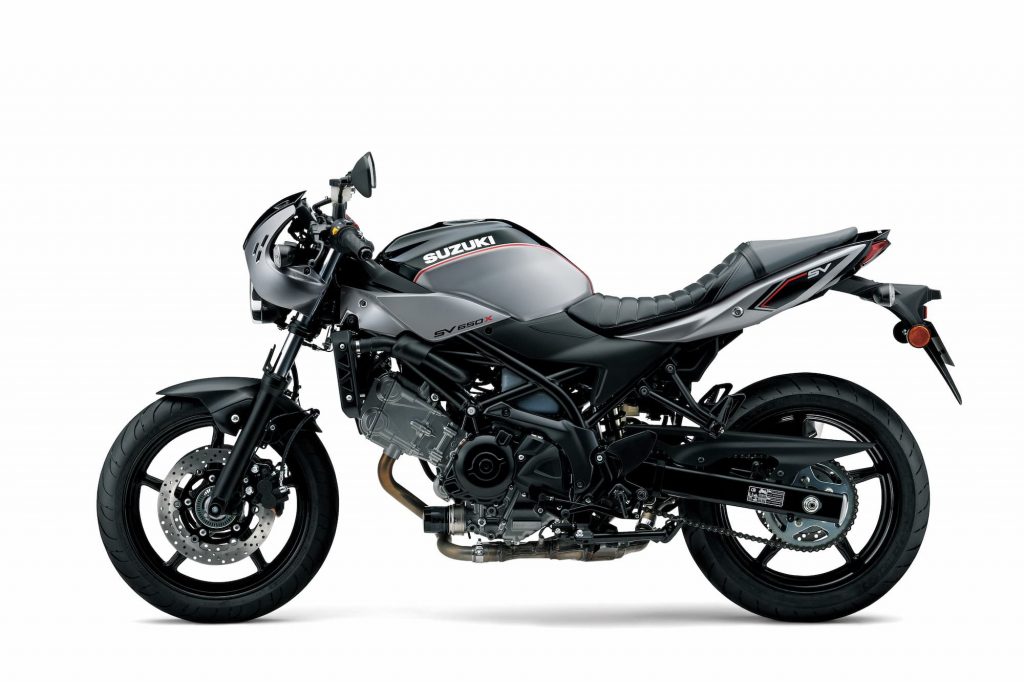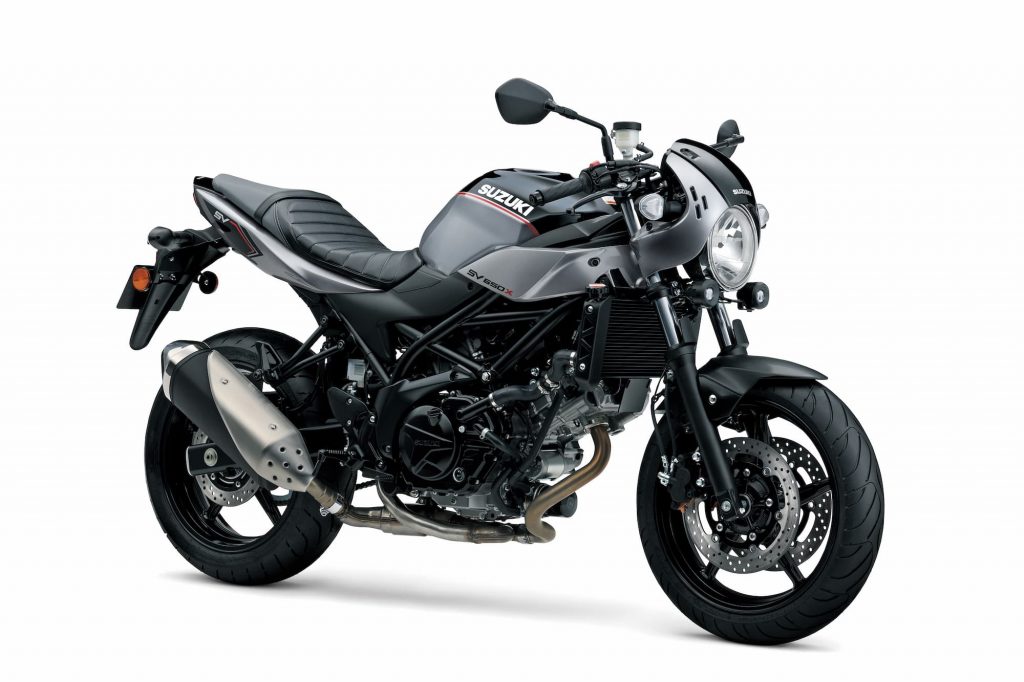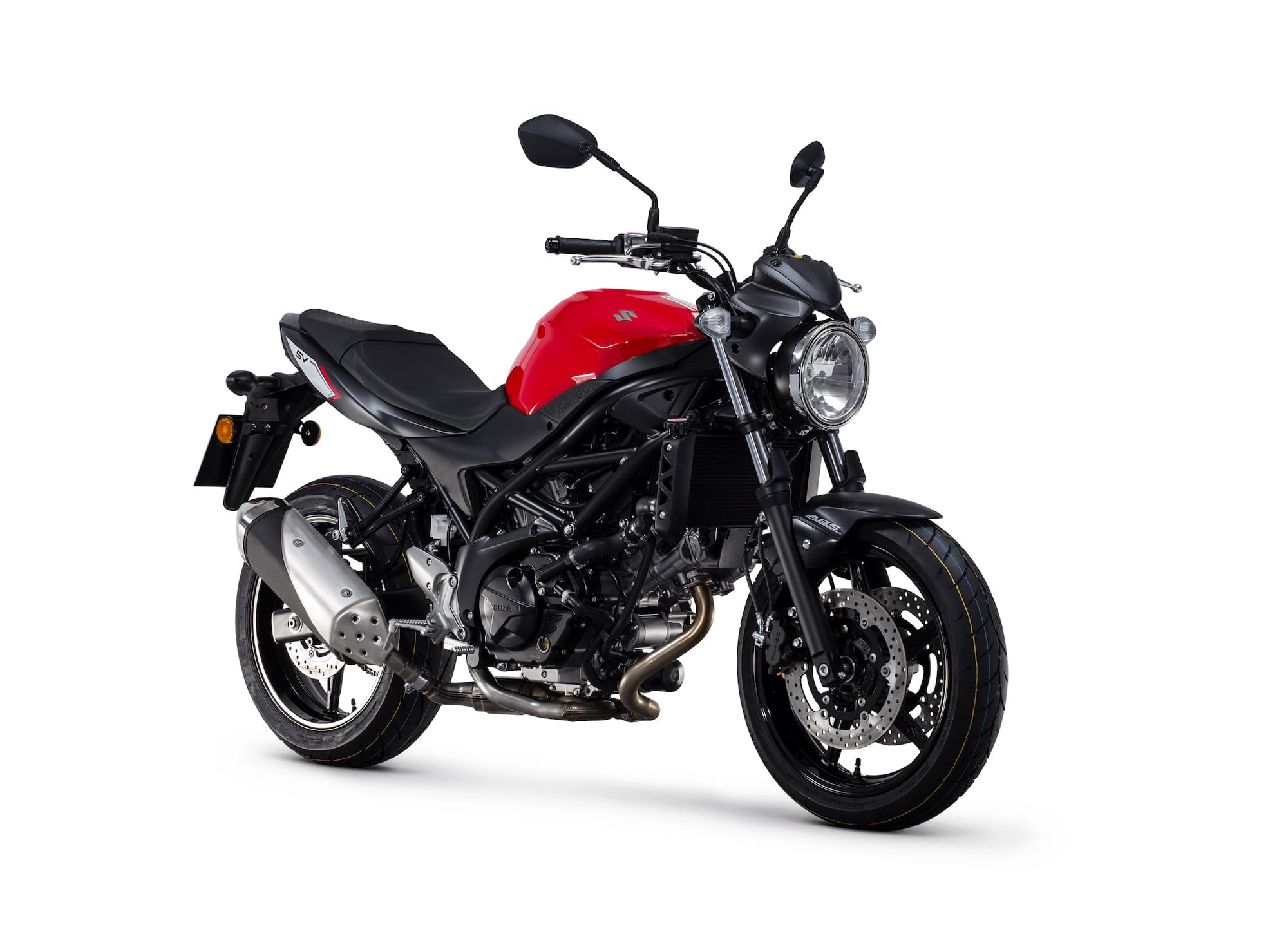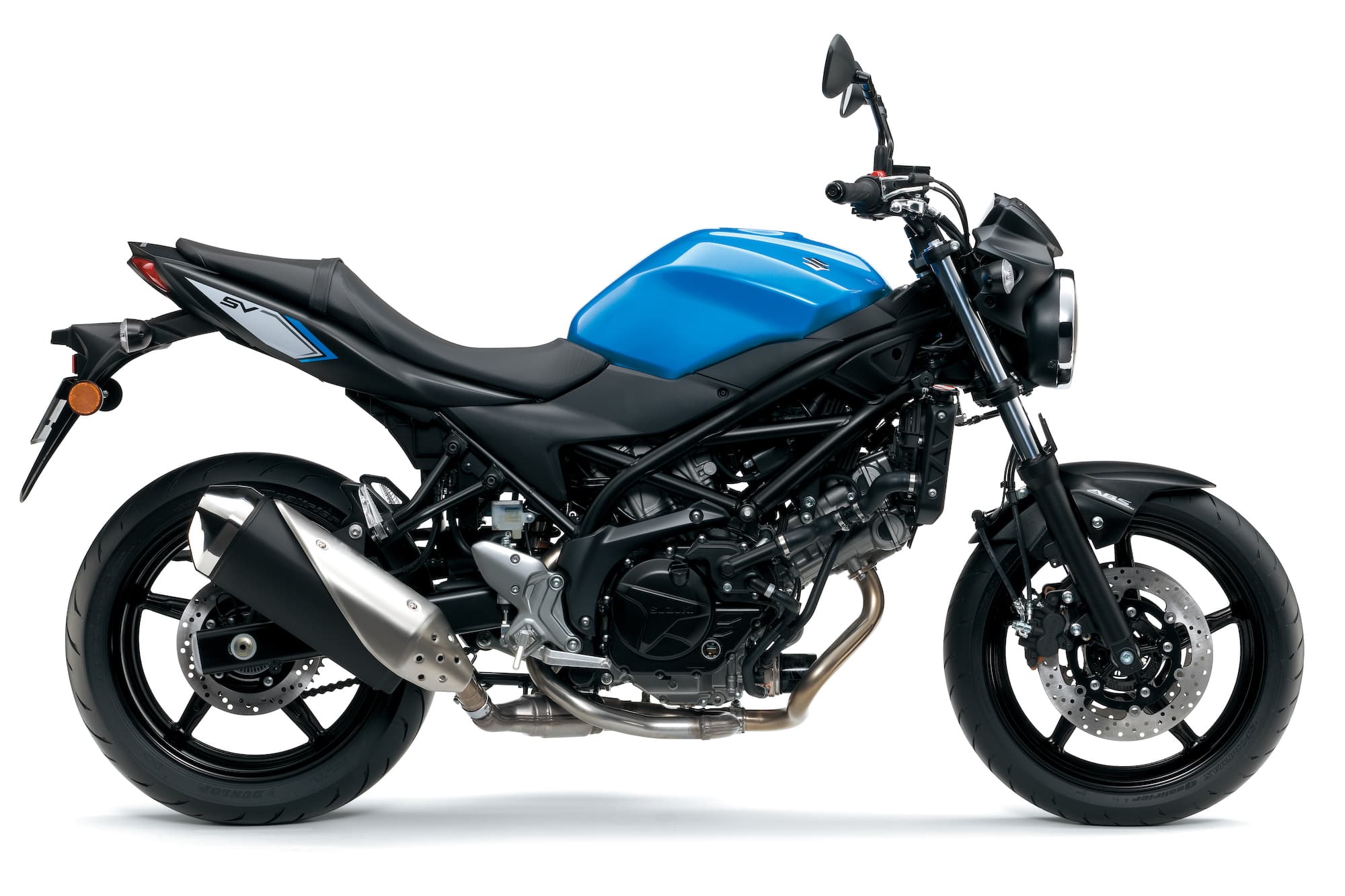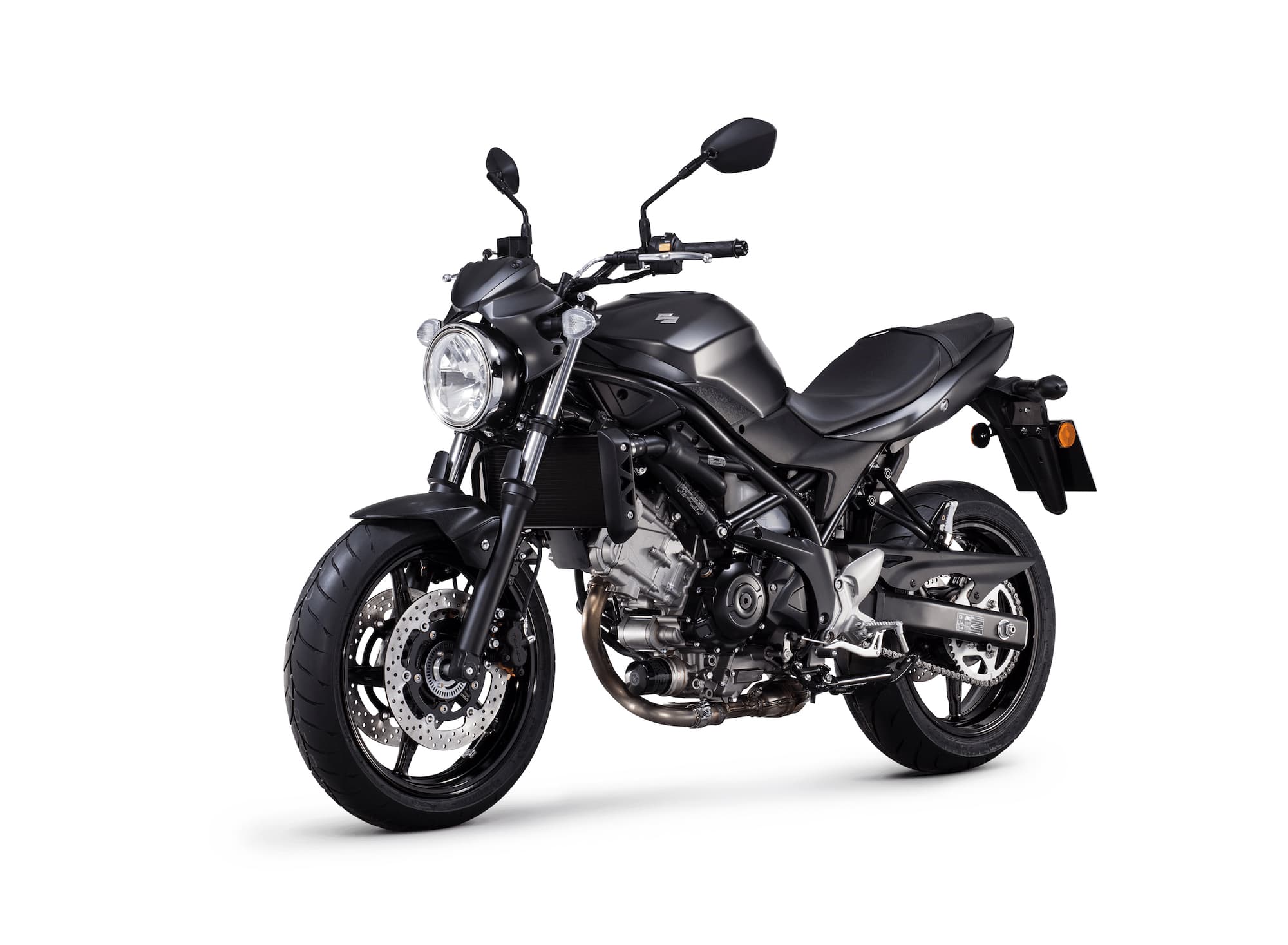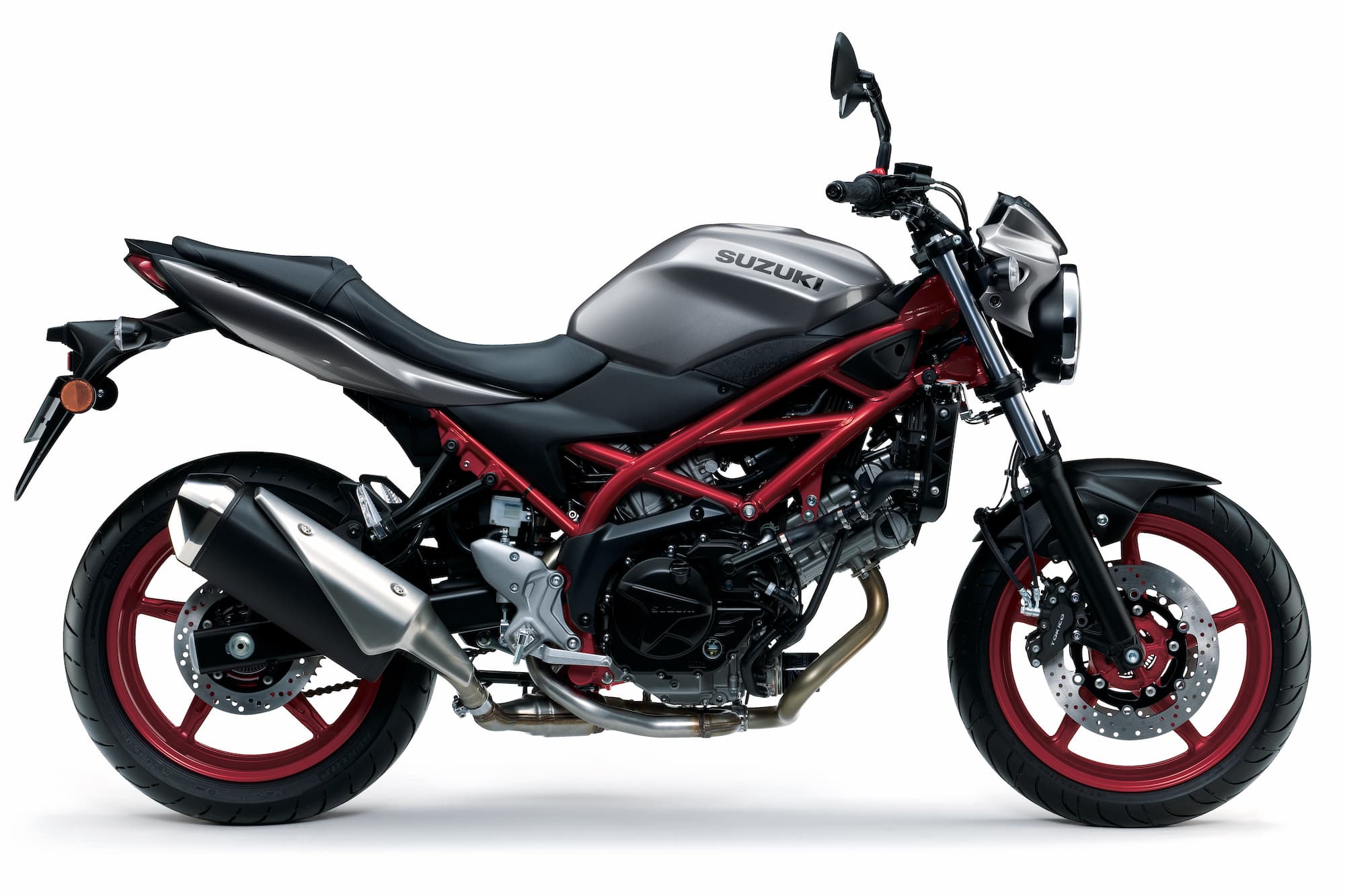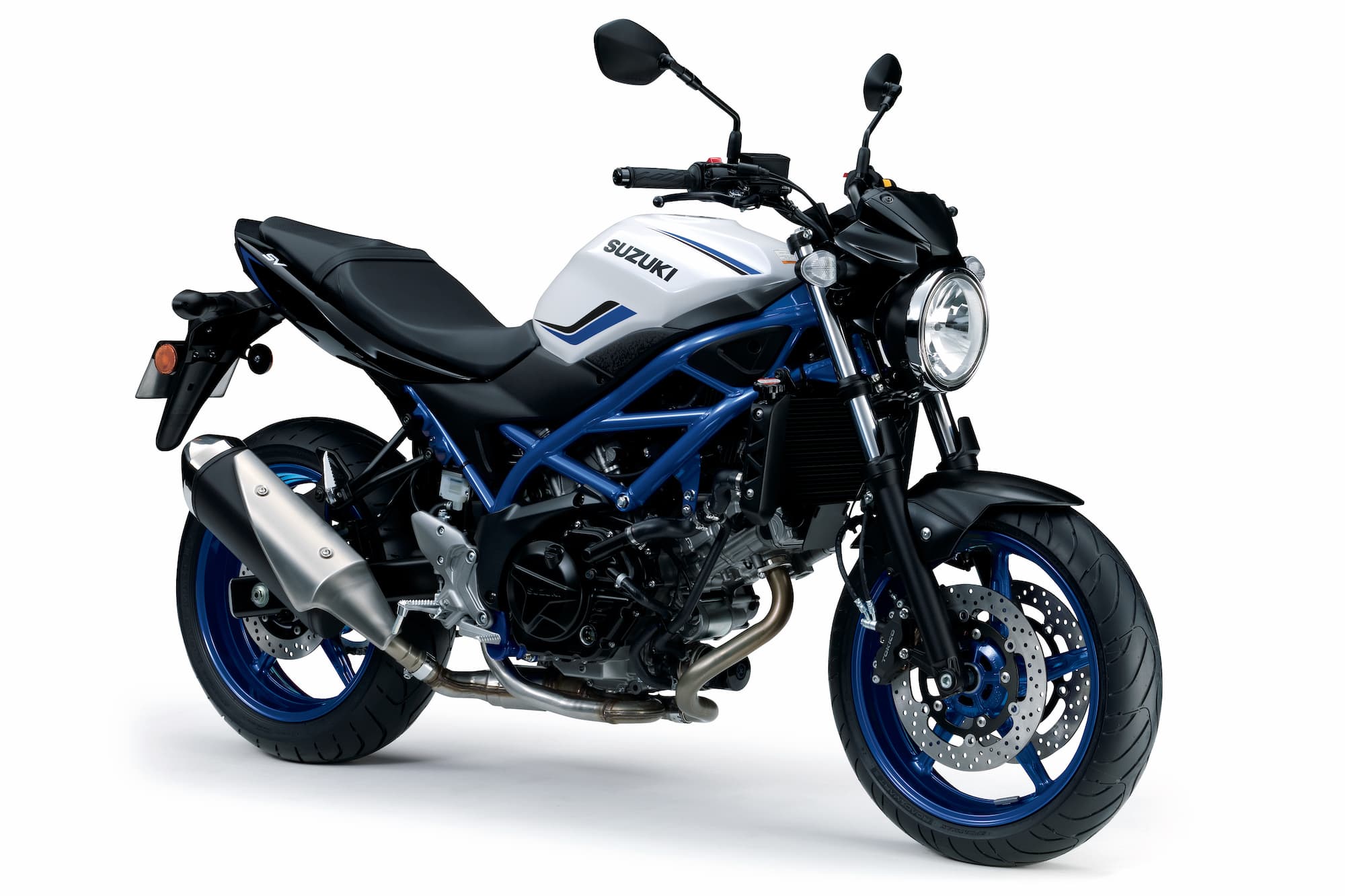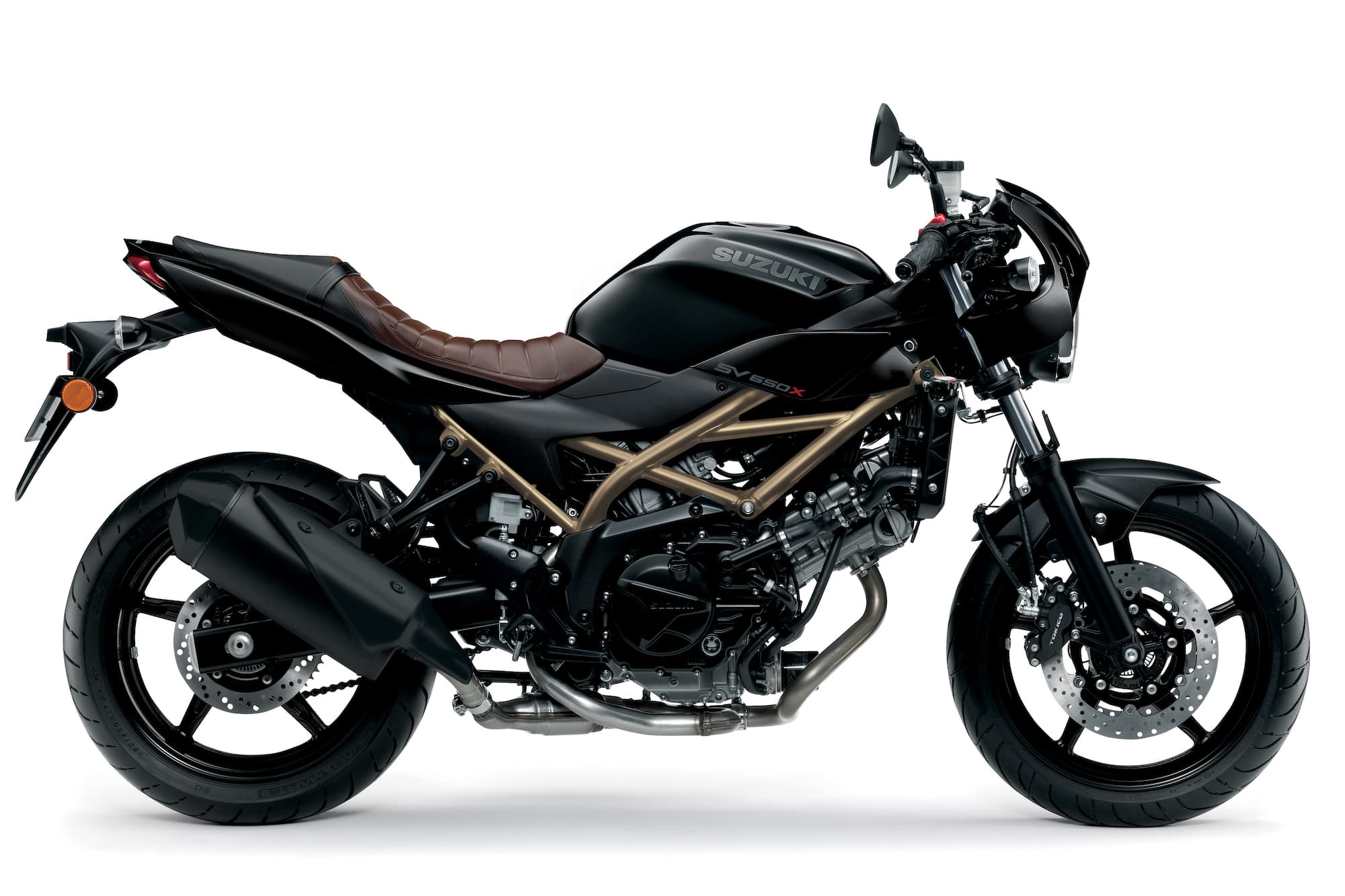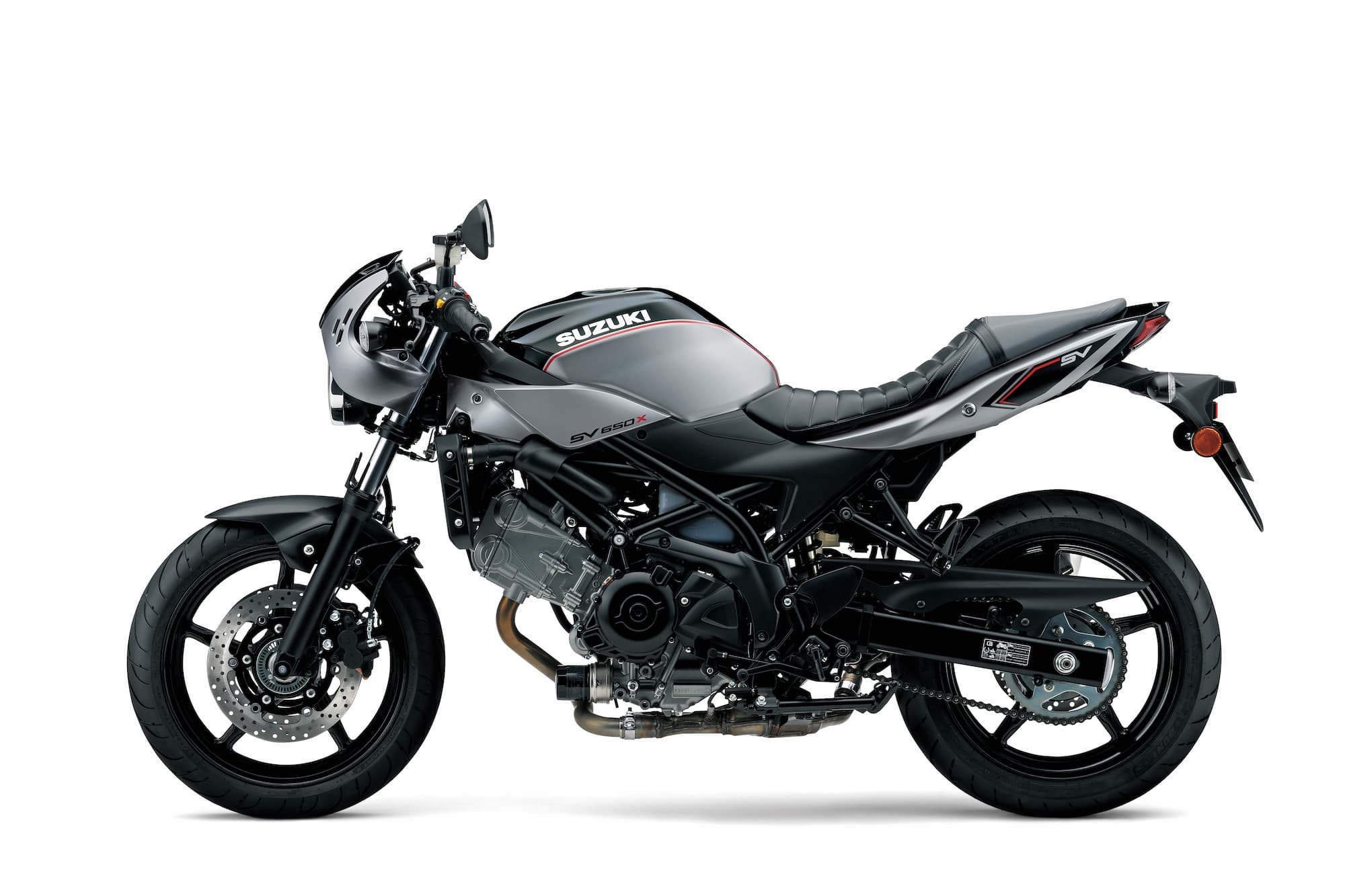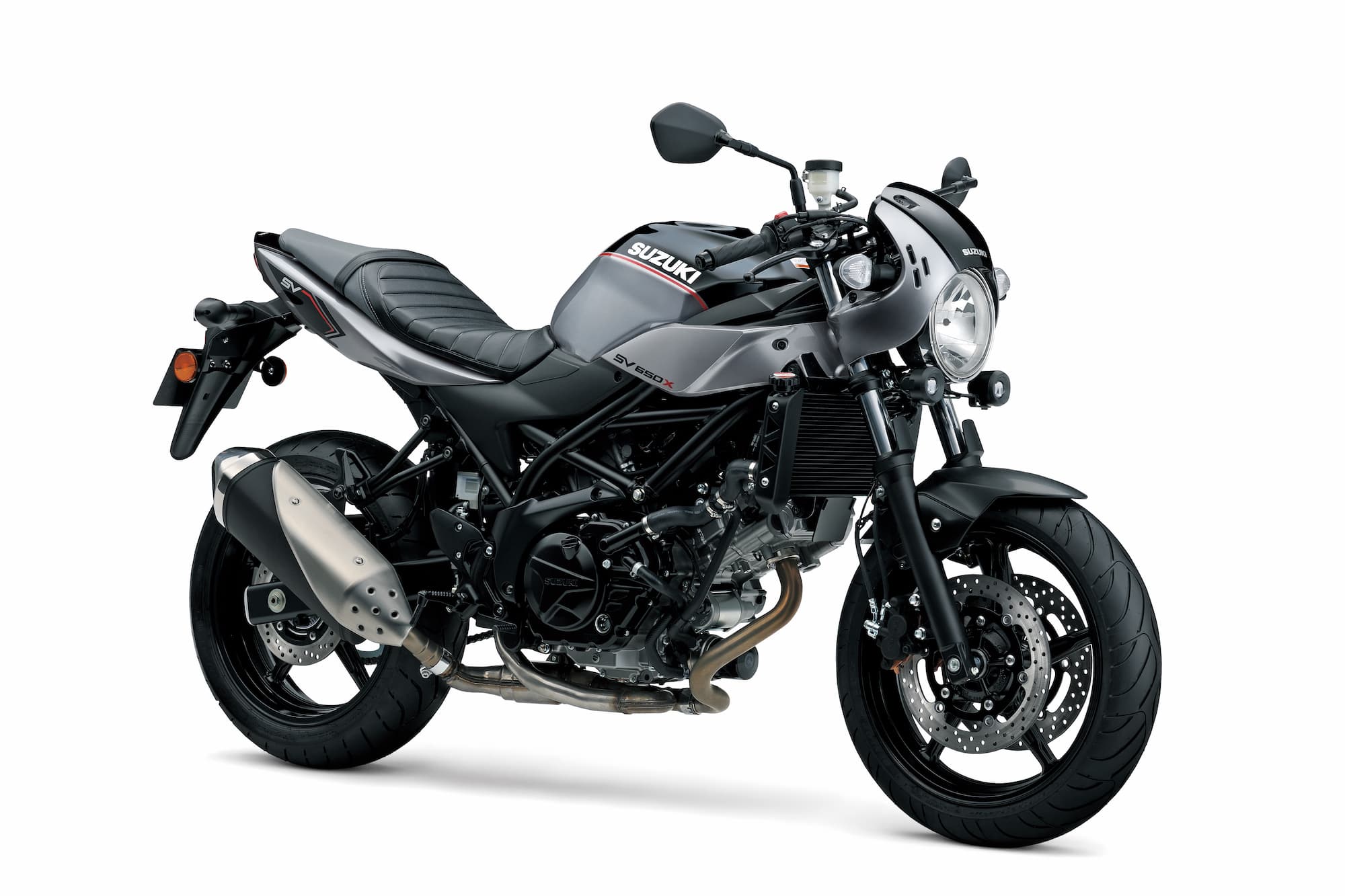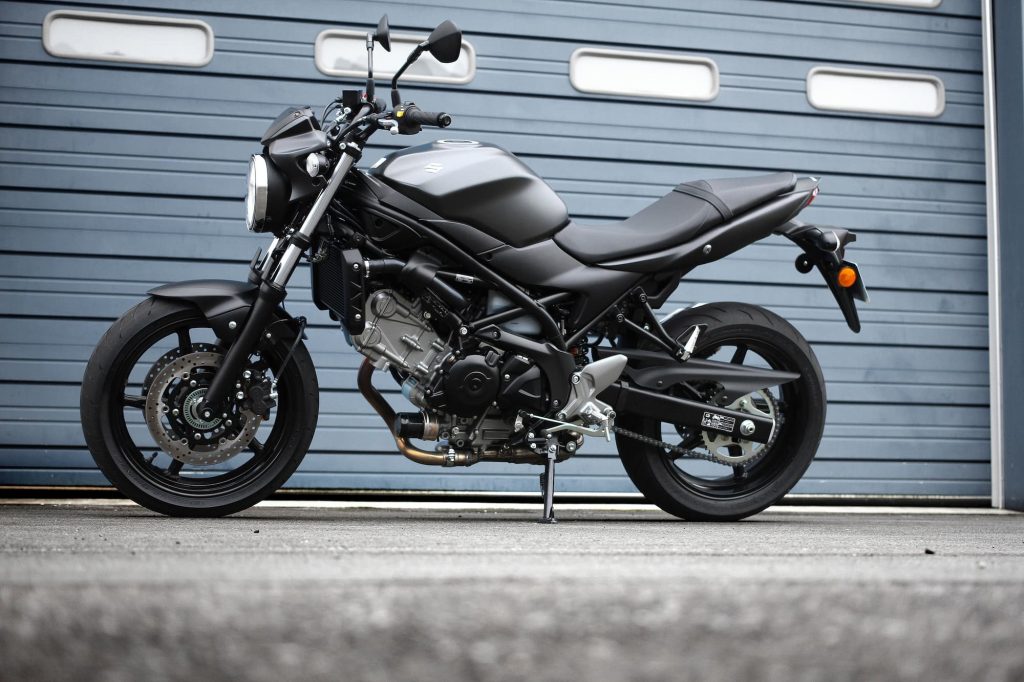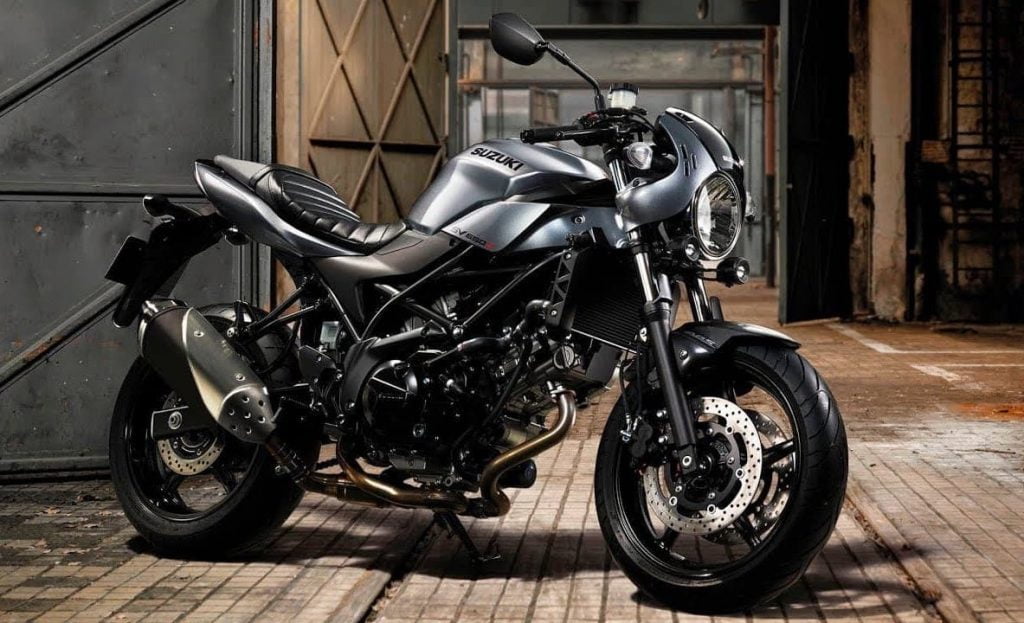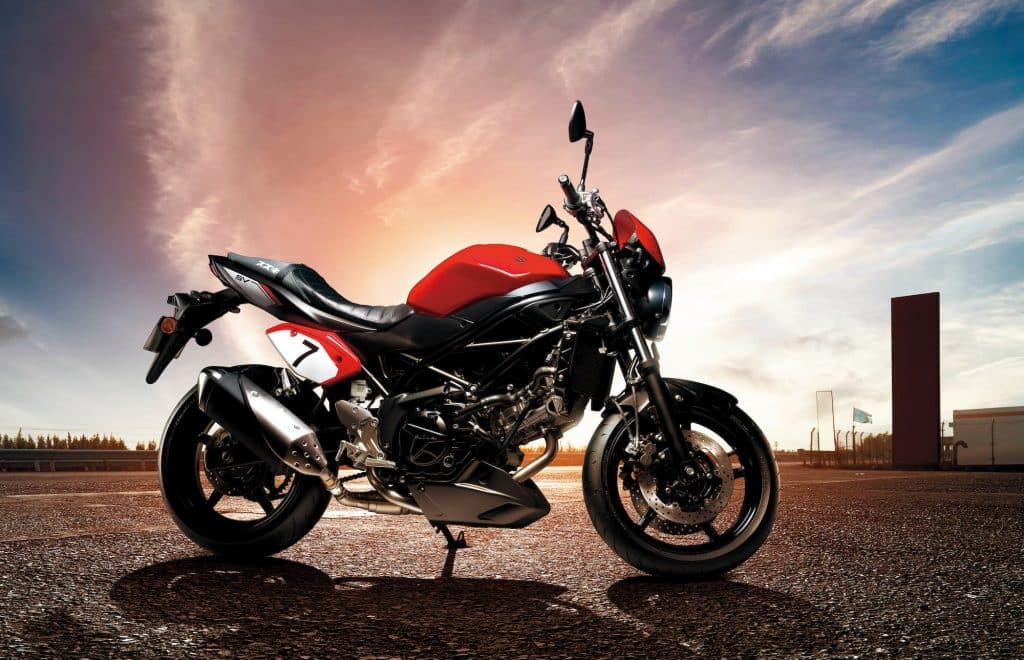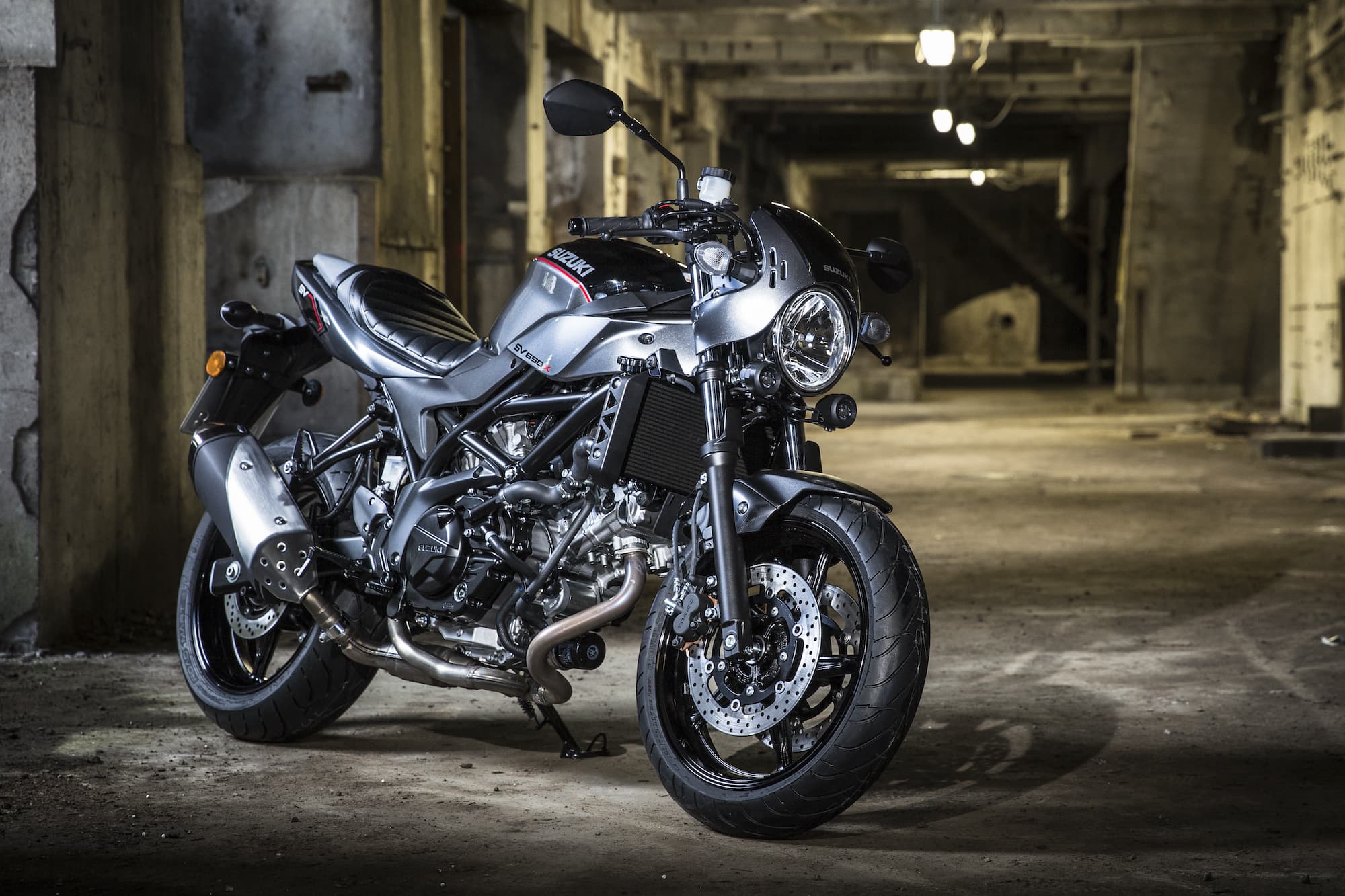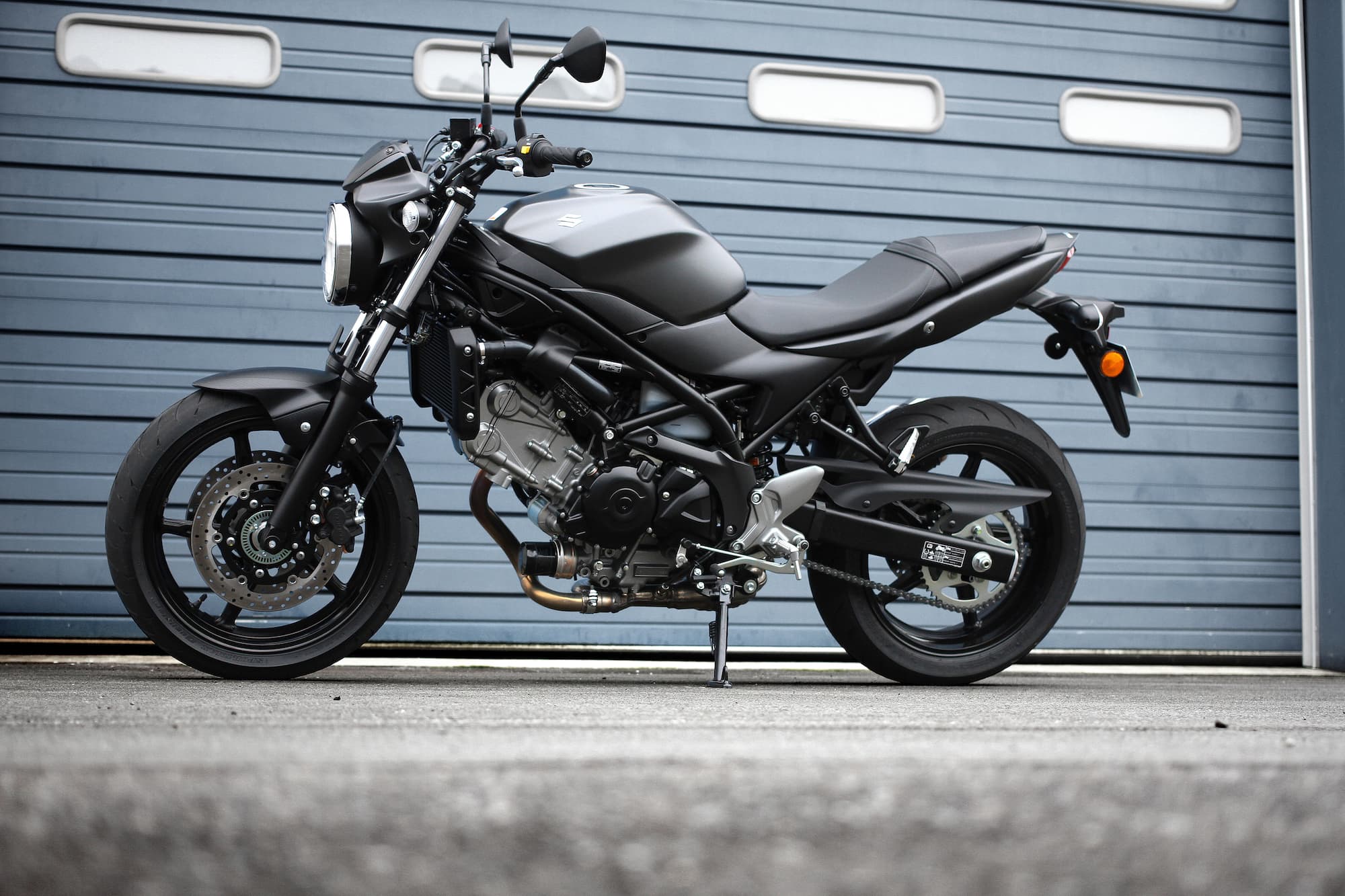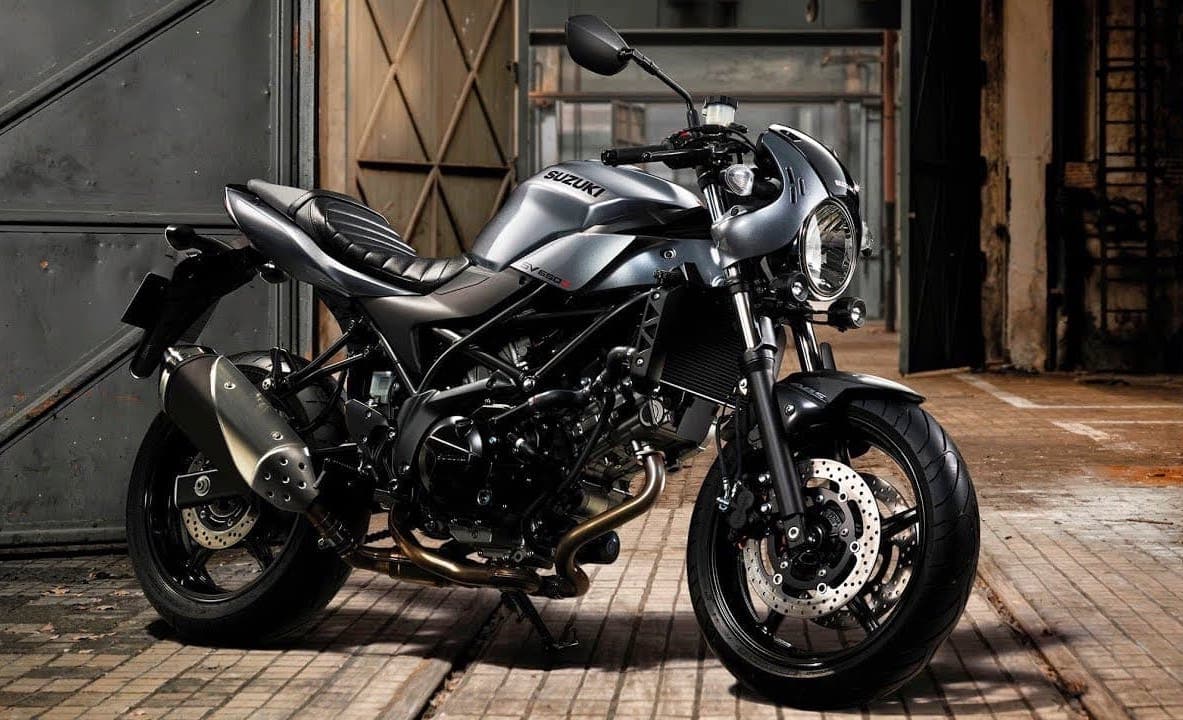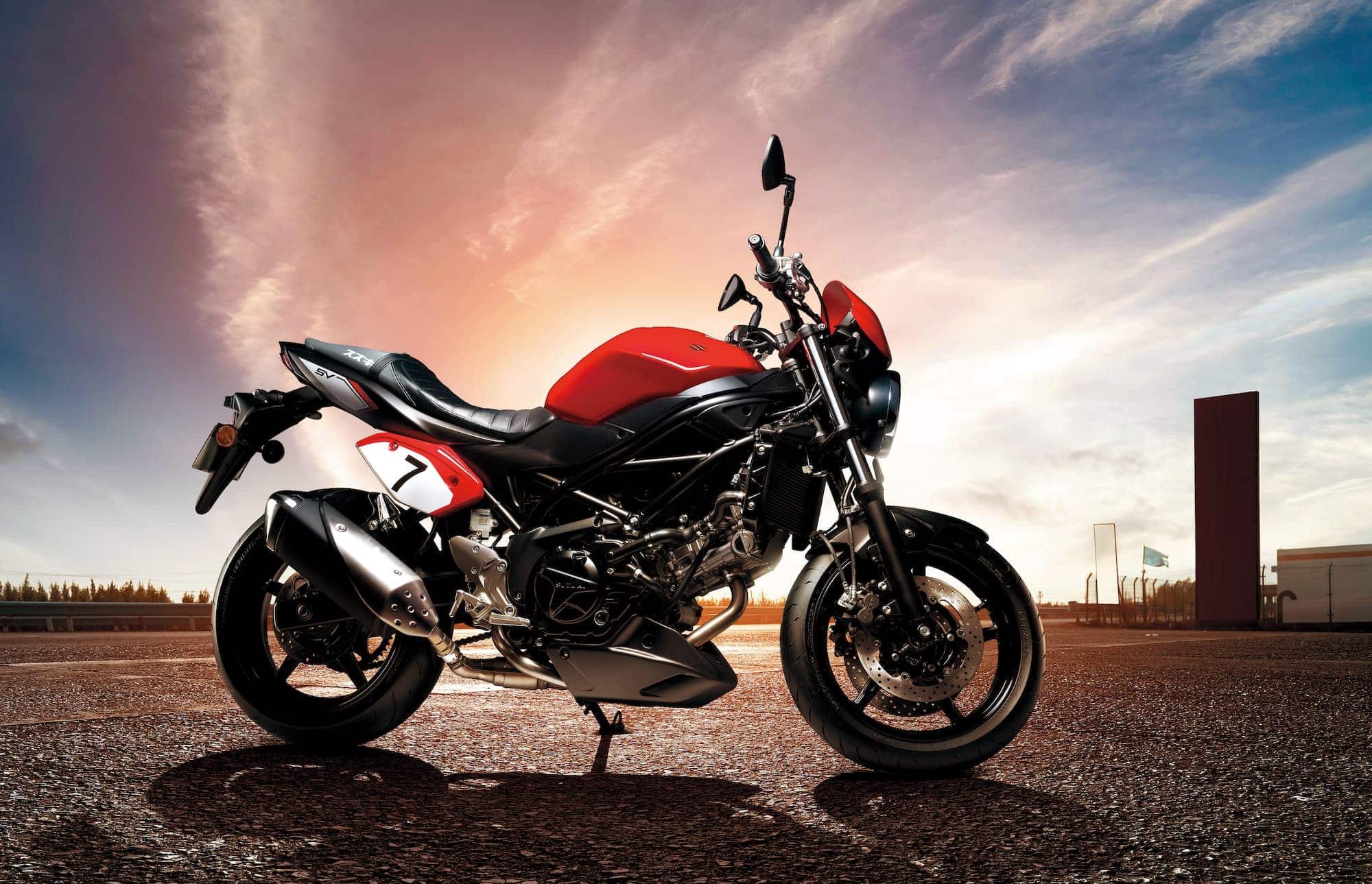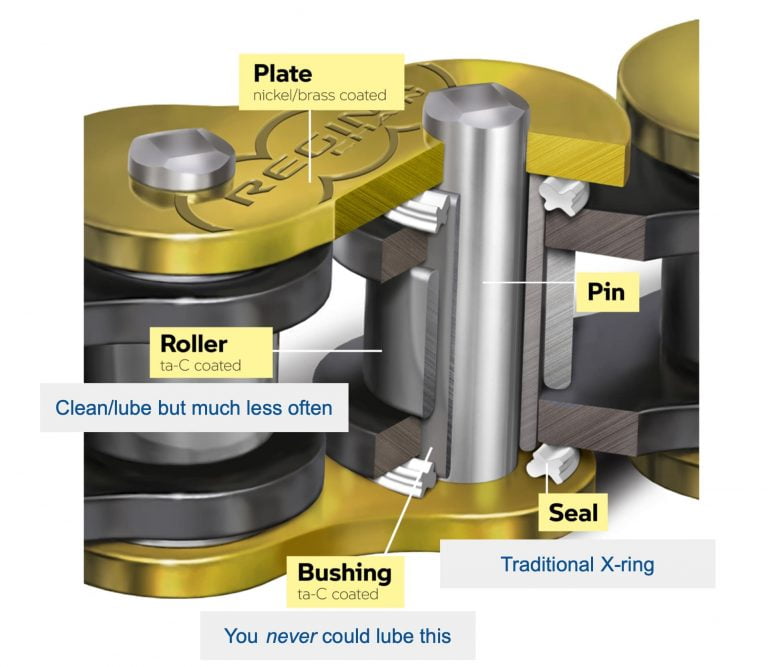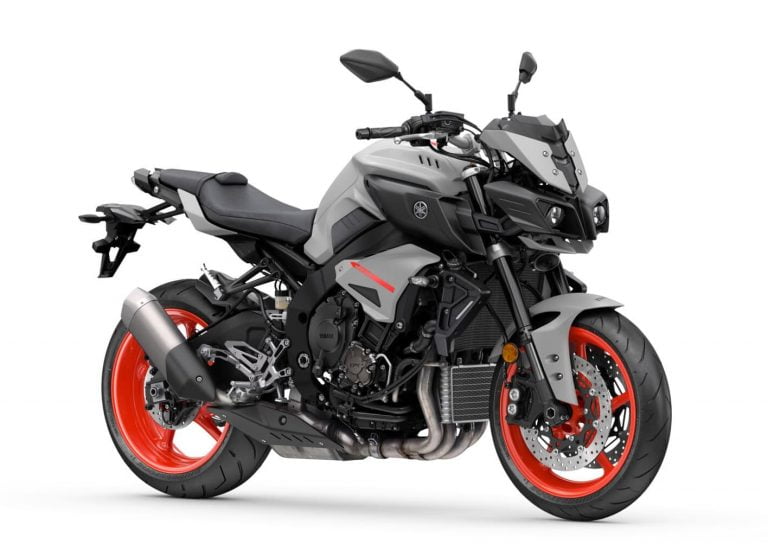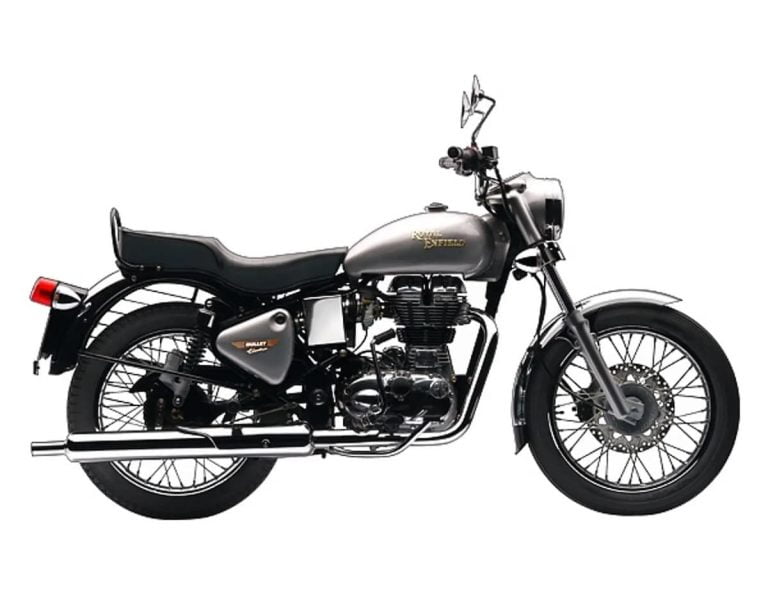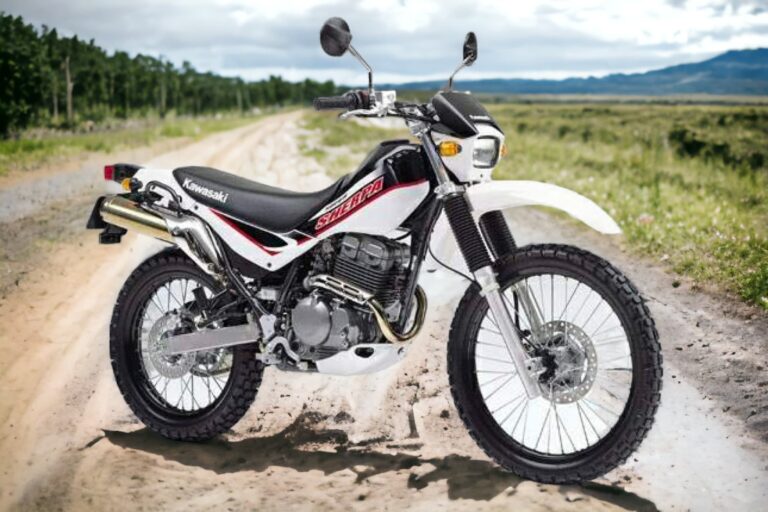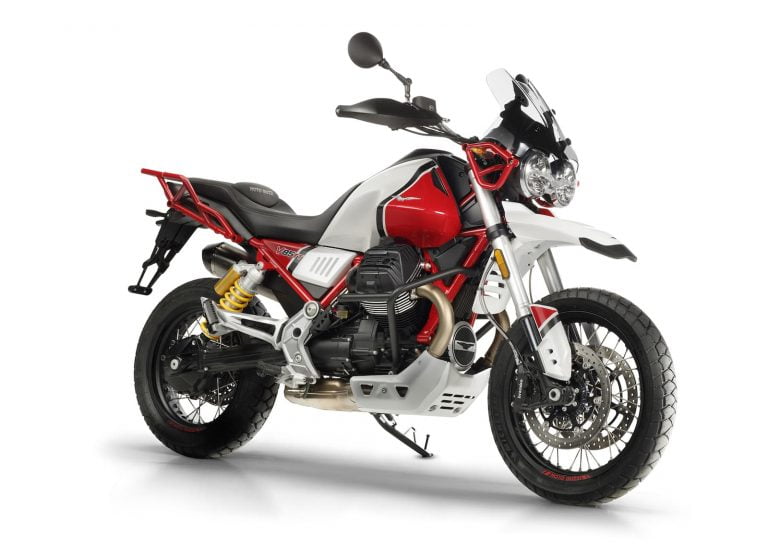Suzuki SV650 3rd Gen (2016+, including SV650X) Maintenance Schedule and Service Intervals
This is the maintenance schedule and associated service intervals for the Suzuki SV650 3rd Gen, made from 2016 onward.
The Suzuki SV650 is Suzuki’s middleweight sport bike powered by a V-twin engine. It has been popular for decades. The 2016+ model of SV650 (including the SV650X) are the third generation of SV650.
In reality the 3rd gen was actually a restyled Suzuki SVF650 Gladius, but with some all-important styling changes that were needed to convert the faithful, along with some tech updates.
The Suzuki SV650 line has been around since 1999. It’s Suzuki’s middleweight street/sport bike, and is used for everything from everyday commuting to track day fun.
Here are all the generations of Suzuki SV650 or Gladius:
- Suzuki SV650/SV650S 1st gen 1999-2002 (carburettor-fed, “curvy”)
- Suzuki SV650/SV650S 2nd gen 2003-2010 (fuel-injected, angular frame)
- Suzuki SFV650/Gladius 2009-2015
- Suzuki SV650/SV650X 2016+ (current model)
The Suzuki SV650 3rd gen is based on a liquid-cooled DOHC 8-valve 645cc 90-degree V-twin engine. In base trim it makes 56 kW (75 bhp) at 8500 rpm, and peak torque of 64 Nm (47 lb-ft) at 8100 rpm.
This site has links for things like oil and spark plugs from which we earn a commission (which unfortunately nobody can save, not even us). If you appreciate this work, then please use those links. Thanks!
Suzuki SV650 Service Intervals (3rd gen)
Overall, the Suzuki SV650 has 3500 mile / 6000 km service intervals between oil changes. Every few oil changes, change the oil filter too.
The major valve service interval for the SV650 is a longer 15000 miles / 24000 km. As time goes on, the valves need less and less attention.
Tighten up bolts at every oil change — V-twins are a little heavy on vibration and tend to shake things loose.
Replace your fluids — clutch, brake, and coolant — every 2-4 years.
Also, keep the chain lubed (ever 600 mi / 1000 km), or more often if riding in adverse conditions (dusty roads, or the rain).
What you need to maintain your Suzuki SV650 3rd gen
If you’re going to do work on your 3rd gen Suzuki SV650, you’ll need some basic motorcycle maintenance tools. But apart from that, you’ll also need a few other extra things.
| Part | Suzuki SV650 3rd Gen spec |
|---|---|
| Oil | Suzuki requires engine oil with JASO MA spec, or at least API SF/SG or SH/SJ spec. Many oils fit this. Suzuki recommends SAE 10W-40 weight Suzuki motor oil. You can use any high-grade motorcycle oil like Motul 5100 10W-40. |
| Oil filter | Use a Hiflofiltro HF138RC, which is a drop-in high-quality replacement. |
| Air filter | Use a K&N air filter as a drop-in replacement, part number SU-6509. |
| Spark plugs | The standard spark plug is NGK MR8E-9. |
| Brake fluid/Clutch fluid | Suzuki (like most motorcycles) requires DOT 4 brake and clutch fluid. |
| Brake pads | A popular drop-in upgrade (that’s cheap) is to use EBC double hardened brake pads. You need FA229HH and FA231HH up front, and FA174HH at the rear. |
| Coolant | Suzuki only requires a coolant that’s “compatible with an aluminium radiator”, recommending Suzuki super long-life coolant or an alternative. |
| Chain maintenance | Use either Motul chain paste or a complete Motul chain care kit for frequent chain servicing. |
| Grease | Always handy to have some lithium soap-based grease for external pivot points, like the kickstand. |
| Cable maintenance | Keep your throttle cable and your clutch cable lubricated with Protect all cable life. |
Suzuki SV650 3rd Gen Maintenance Schedule
Below is the maintenance schedule for the Suzuki SV650 3rd Gen.
NOTES:
- The break-in service is omitted — usually a dealer does this during the warranty period.
- Time/distance Interval: This interval should be judged by odometer reading or number of months, whichever comes first.
- If you use the motorcycle under severe conditions (e.g. in dust and rain), you may have to service it more frequently, especially the filter and chain.
- Legend:
- I= Inspect and clean, adjust, replace or lubricate as necessary,
- R= Replace,
- T= Tighten,
- C/L = Clean/Lubricate
| km x 1000 | 6 | 12 | 18 | 24 | |
|---|---|---|---|---|---|
| mi x 1000 | 4 | 7.5 | 11 | 14.5 | |
| Service checklist (see below) — Perform all items | ✓ | ✓ | ✓ | ✓ | 6 months |
| Engine oil — Replace (Motul 5100 10W-40) | ✓ | ✓ | ✓ | ✓ | 6 months |
| Engine oil filter — Replace (HF138RC) | ✓ | 18 months | |||
| Air filter — inspect | ✓ | ✓ | ✓ | ||
| Air filter — Replace (K&N SU-6509) | ✓ | ||||
| Valve clearances — Check Intake valves: 0.10-0.20 mm Exhaust valves: 0.20-0.30 mm | ✓ | ||||
| Spark plugs — Inspect condition | ✓ | ✓ | 12 months | ||
| Spark plugs — Replace (NGK MR8E-9) | ✓ | ✓ | 12 months (alternating) | ||
| Throttle valve synch — Perform | ✓ | ✓ | |||
| Exhaust pipe bolts and muffler bolts — Tighten | ✓ | ✓ | |||
| Steering — Check for smooth operation, no notchiness | ✓ | ✓ | |||
| Front forks — Check smooth operation and no damage / pitting | ✓ | ✓ | |||
| Rear suspension — Check smooth operation and no damage / pitting | ✓ | ✓ | |||
| Evaporative emission control system (if fitted) — Check | ✓ | ✓ | |||
| Brake fluid — Replace (Castrol DOT 4) | 2 years | ||||
| Brake hoses — Replace | 4 years | ||||
| Engine coolant — Replace (Suzuki super long-life coolant) | 4 years/48000 km |
Suzuki SV650 Annual Service Checklist
Below is the annual service checklist for the Suzuki SV650. Do it according to the schedule above.
Some of these items are meant to be done more frequently and are mentioned at the top.
| Suzuki SV650 Annual Service Checklist |
|---|
| General lubrication — Perform Every 600 mi / 1000 km |
| Battery — Check voltage and condition |
| Fuel lines — Check |
| Radiator hoses — Check |
| Throttle cable play — Check (2-4 mm, 0.08-0.16 in) |
| Idle speed — Check (1300 rpm) |
| Clutch — Check free play, and lubricate cable (Protect All Cable Life) |
| Brakes — Inspect correct function, brake pad thickness, and brake disc thickness |
| Brake fluid — Check level (between lines). Note that brake fluid drops with brake pad wear. |
| Tires — Inspect condition and tread depth |
| Chassis bolts and nuts — Tighten |
| Cylinder head nuts, exhaust pipe bolts and muffler connector bolt — Tighten |
Maintaining your Chain on your Suzuki SV650
Maintain your chain on your Suzuki SV650 regularly. Either use a good-quality (and affordable) chain lube like Motul Chain Paste, or use a full on Motul Chain Care Kit to clean and restore a chain.
Suzuki recommends that you maintain your chain regularly according to the following schedule.
| Chain maintenance item | Every |
|---|---|
| Check chain * Correct tension / slack (20-30mm / 0.8-1.2 in at loosest point) * Adequate lubrication * No excessive wear / damage (loose pins, damaged rollers, dry or rusted links, kinked or binding links, excessive wear, and improper adjustment) | Ride (pre-ride check) |
| Clean and lubricate chain | 1000 km / 600 miles |
To check chain slack, check the free vertical movement of the chain at its loosest part (roll the bike around and watch how the chain moves).
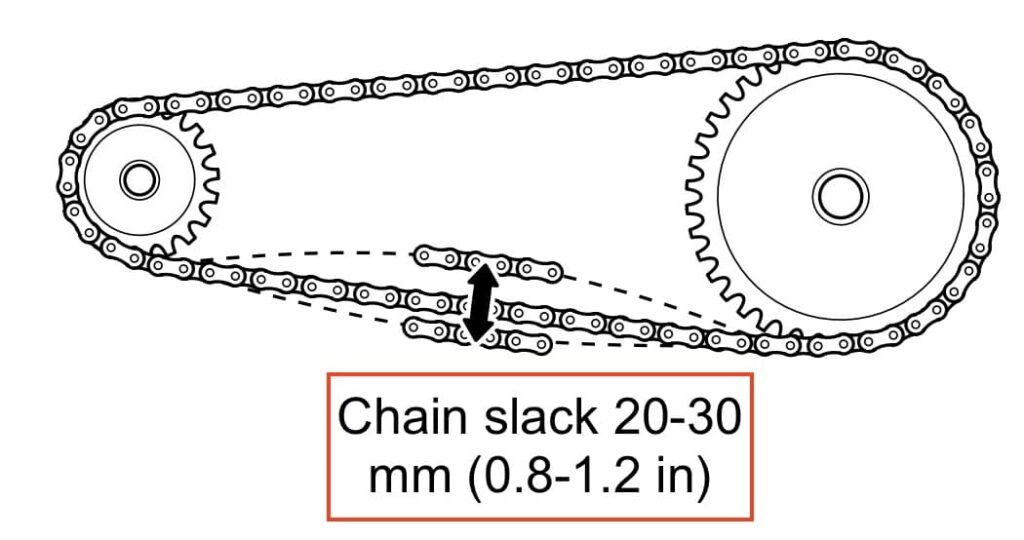
Target chain slack for the SV650 is 20-30 mm (0.8-1.2 inches)
If the chain slack is out of speck, you need to adjust it. To adjust chain slack follow these steps:
- Loosen the axle nut
- Turn the right and left adjuster bolts until the chain has 20-30 mm of slack (target the tighter end of the range, as chains stretch)
- Keep the chain / wheel in alignment using the alignment marks
- Tighten the axle nut to 100 Nm / 73 lb-ft
- Check the chain slack again
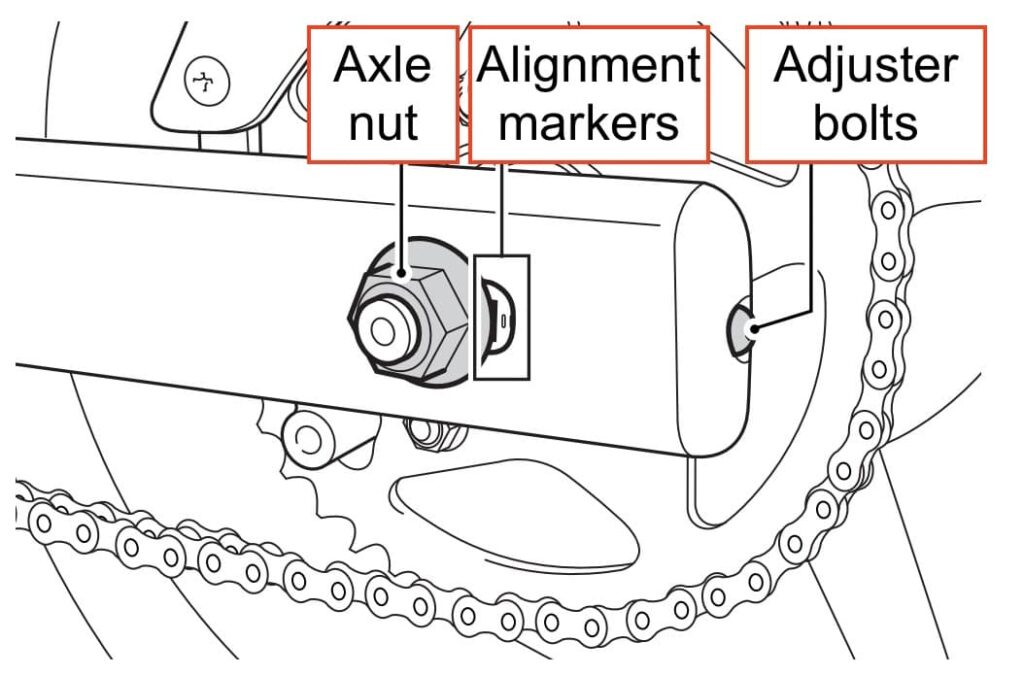
Tyre size and tyre pressure for the Suzuki SV650 3rd Gen
The manual for the 2016+ Suzuki SV650 3rd gen specifies the following tyre sizes and recommends the following tyre pressure.
Stock, the Suzuki SV650 3rd gen ships with Dunlop Roadsmart III tyres. You can fit any sport, sport touring, or road tyres and get a lot out of your SV650.
| Tyre | Size | Tyre pressure |
|---|---|---|
| Front | 120/70 ZR17 58W | 225 kPa (2.25 bar, 33 psi) |
| Rear | 160/60 ZR17 69W | 250 kPa (2.50 bar, 36 psi) |
About the Suzuki SV650 3rd Gen
The Suzuki SV650 is, and has been for a long time, Suzuki’s middleweight sport bike.
With handlebars and a midrange-focused engine, the SV650 is very capable as an everyday road bike. It’s comfortable, has a very reliable and characterful engine, and has looks that are understated and elegant.
The Suzuki SV650X is a very similar bike but with a little cowl and clip-on handlebars. It’s still eminently comfortable.
Primarily, Suzuki SV650 has been a competitor to the Kawasaki Ninja 650 and Z650, or other earlier variants of the same bikes. But the SV650 has been unique among its competitors for being the only bike with a V-twin engine.
The core of the SV650 is what makes it special. The liquid-cooled DOHC 16-valve L-twin engine was technologically more advanced than the motorcycle that inspired it — the early Ducati Monster bikes (like the Monster 900). The engine in this generation has perfect primary balance, giving it smooth revving all the way from idle up to the 10000 rpm redline.
The 3rd gen Suzuki SV650 is a breath of fresh air for the faithful fans of the series who didn’t like the styling of the Gladius — even though the 3rd gen shares a lot in common with the Gladius internally.
The 3rd gen Suzuki SV650 includes Suzuki’s “Low RPM Assist” feature that makes the SV650 almost unstallable. It adjusts engine RPM during take-off and at low speed to make sure that the bike always stays running.
The 3rd gen SV650 has fairly simple running gear. The front forks are conventional (not inverted) and are non-adjustable. People taking the SV650 to track days frequently attack the front fork as one of the first things to improve.
The brakes on the SV650 are decent — four-piston Tokico brake calipers gripping twin 290mm discs. These are at least sporty.
The SV650X is the more sporty variant of the SV650. It has the same chassis and all ride gear, but has a little cowl, clip-on handlebars, and a sportier seat.
Manual for the Suzuki SV650 3rd Gen
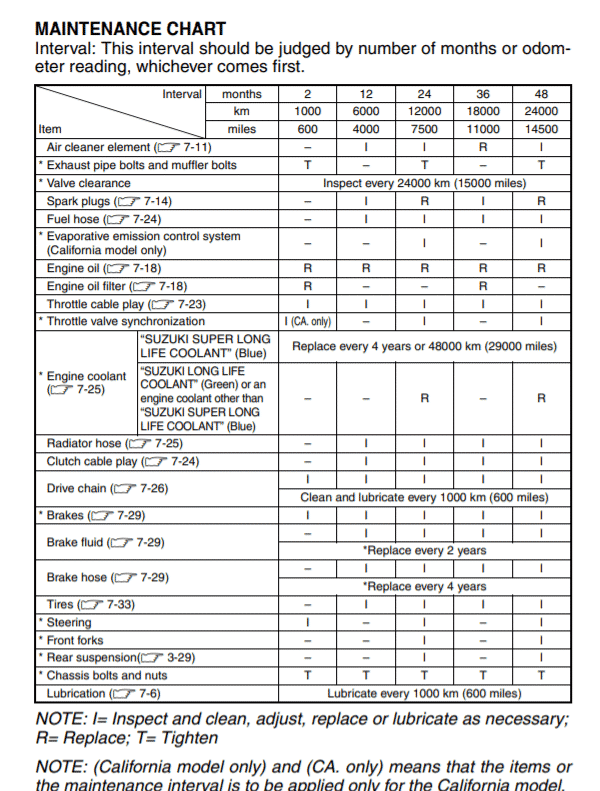
The above maintenance schedule comes directly from the user’s manual for the Suzuki SV650 3rd Gen, from a 2017 manual. It has also been compared to manuals from later years for the SV650X for example.
You can download it from Suzuki’s official website here.
